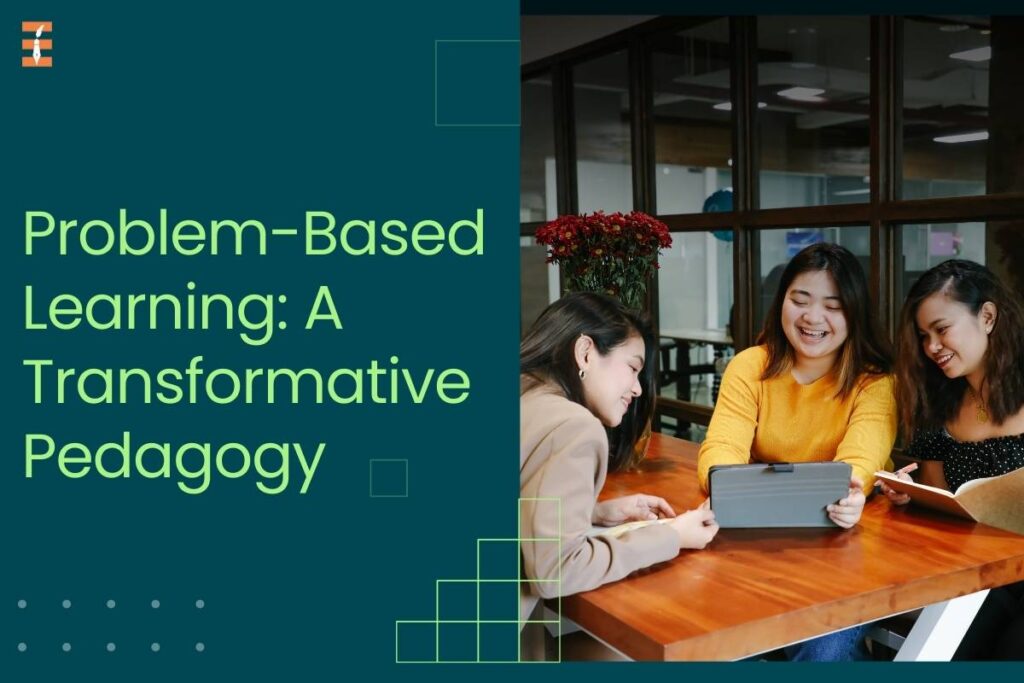Conventional approaches are consistently under review to align with the changing requirements of learners. A pedagogical innovation at the forefront of this evolution is Problem-Based Learning (PBL), which redirects the emphasis from the passive acquisition of information to dynamic problem-solving. This in-depth examination delves into the nuanced intricacies of Problem-Based Learning, elucidating its significant influence on the learning journey. Furthermore, practical examples underscore its adaptability, illustrating how PBL is applied across various academic disciplines.
Problem-Based Learning represents a transformative shift in educational methodologies, fostering active engagement and critical thinking among learners. By immersing students in authentic problem-solving scenarios, PBL instills a sense of relevance and purpose in their educational pursuits. This article explores the multifaceted process of Problem-Based Learning, illuminating its impact on the overall learning experience. Through real-world applications across diverse fields, PBL emerges as an instrumental tool, preparing students with not only subject-specific knowledge but also essential skills for navigating the complexities of the modern world.
Understanding Problem-Based Learning (PBL):
Problem-Based Learning is fundamentally a student-centric methodology designed to immerse learners in contextualized problem-solving. Unlike traditional approaches where information is presented first, PBL initiates the learning process with authentic, ill-structured problems. These scenarios mirror real-world challenges, sparking curiosity and driving exploration. PBL is not confined to specific subjects; it is a versatile tool applicable across various disciplines.
The Problem-Based Learning Process:
1. Introduction to the Problem
- PBL commences with the presentation of a complex, real-world problem pertinent to the subject matter.
- This initial step serves to capture the interest and curiosity of learners by introducing them to a scenario that mirrors professional challenges.
2. Problem Analysis and Definition
- Students collaboratively analyze the presented problem, breaking it down to identify underlying issues and gaps in their knowledge.
- This phase fosters critical thinking, communication skills, and the ability to extract essential information from complex situations.
3. Learning Objectives Identification
- Through meticulous problem analysis, learners pinpoint the knowledge and skills required to address the identified issues.
- This aligns learning objectives with practical problem-solving, ensuring a purposeful and goal-oriented educational experience.
4. Independent Study

- Empowered with the identified learning objectives, students embark on independent research, acquiring the necessary knowledge and skills.
- This stage promotes self-directed learning, encouraging learners to take ownership of their educational journey.
5. Collaborative Learning
- PBL places a significant emphasis on group collaboration, as learners bring diverse perspectives and insights to the problem-solving process.
- Through discussions, debates, and information sharing, students refine their understanding and coalesce individual expertise.
6. Application of Knowledge
- Armed with the acquired knowledge, students propose and implement solutions to the original problem.
- This hands-on application solidifies their understanding and prepares them for real-world challenges they may encounter in their future professions.
Impact on Learning:
1. Engagement and Motivation

- PBL kindles intrinsic motivation as learners grapple with authentic problems, fostering a sense of purpose and relevance.
- The hands-on, practical nature of PBL keeps students engaged, leading to a more profound understanding of the subject matter.
2. Critical Thinking and Problem-Solving Skills
- PBL hones critical thinking skills by immersing learners in open-ended problems that require analysis and solution synthesis.
- The iterative nature of problem-solving in PBL cultivates resilience and adaptability, crucial for navigating professional challenges where solutions may not be straightforward.
3. Collaboration and Communication
- Group-based problem-solving in PBL nurtures effective collaboration and communication skills.
- Students learn to articulate their ideas, actively listen to peers, and collectively strategize, mirroring real-world teamwork dynamics.
4. Application of Knowledge in Real-World Context
- PBL bridges the gap between theoretical knowledge and practical application, preparing learners for the complexities of professional environments.
- The acquired knowledge is not isolated but integrated into a holistic understanding of real-world challenges, allowing students to see the direct relevance of their education.
Examples of Problem-Based Learning (PBL) Applications:
1. Medical Education

PBL is extensively utilized in medical schools, where students diagnose and develop treatment plans for simulated patient cases, mirroring the challenges of medical practice.
Application: Medical students collaboratively work on cases, improving diagnostic skills and honing the ability to develop comprehensive treatment plans.
2. Engineering Design Challenges
Engineering courses leverage PBL for design challenges, where students collaborate to address complex engineering problems, fostering innovation and practical application.
Application: Engineering students engage in real-world design challenges, promoting creativity and preparing them for the intricacies of engineering projects.
3. Business Strategy Formulation
In business courses, PBL scenarios might involve formulating strategic plans for companies facing market challenges, and honing students’ strategic thinking and decision-making skills.
Application: Business students collaboratively devise strategic plans, enhancing their ability to analyze market dynamics and make informed decisions.
Conclusion:
Problem-based learning (PBL) emerges as a dynamic and impactful educational methodology that transcends the traditional model of passive information absorption. This approach revolutionizes the learning experience by turning it into an active, collaborative expedition marked by exploration and problem-solving. PBL achieves this transformation by immersing learners in authentic, real-world challenges, ensuring that education goes beyond theoretical concepts and directly applies to practical scenarios.
The significance of PBL extends beyond skill acquisition; it cultivates a perpetual passion for learning driven by curiosity and relevance. As students grapple with genuine problems, they develop critical thinking, problem-solving abilities, and a profound understanding of the subject matter. This not only prepares them for the intricacies of professional life but also nurtures a lifelong enthusiasm for acquiring knowledge. Problem-based learning emerges as a pivotal element, acting as a cornerstone in the preparation of individuals for the complexities of the modern world. Its ability to bridge the gap between theoretical knowledge and practical application positions PBL as a transformative force, empowering learners to navigate challenges with confidence and adaptability.
Also Read: 7 Important Steps of Project-Based Learning










